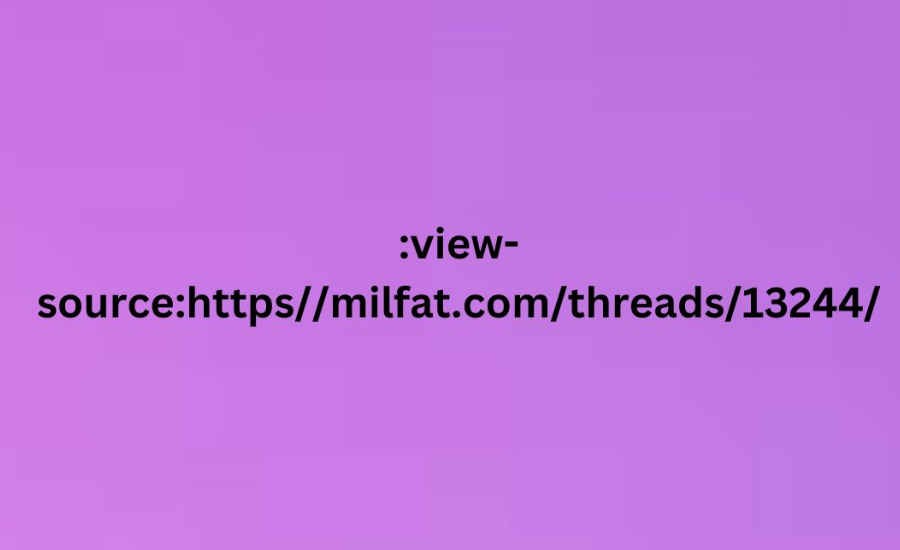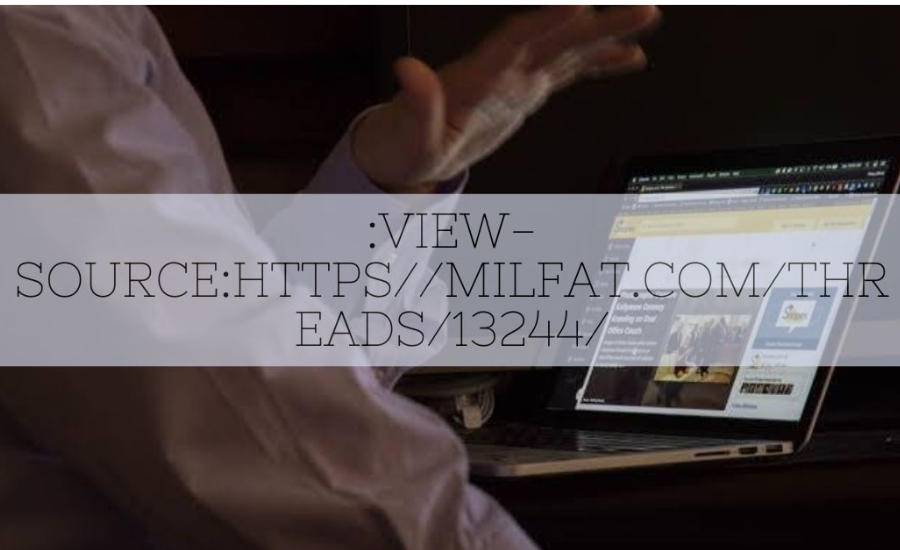Introduction to Viewing Source Code: An Exploration of :view-source:https//milfat.com/threads/13244//

In the rapidly evolving digital landscape, gaining a deep understanding of how websites operate is crucial for both developers and users who are curious about the mechanics behind web pages. One effective way to explore the inner workings of a website is through the “view-source” function. This article will delve into the specific URL :view-source:https//milfat.com/threads/13244/, offering a comprehensive breakdown of its significance and demonstrating how this tool can provide valuable insights into the structure of web pages.
Understanding the View-Source Function and Its Importance
The “view-source” function is a feature integrated into web browsers that allows users to inspect the HTML, CSS, and JavaScript code that forms the foundation of any webpage. When you prefix a URL with “view-source:” in your browser’s address bar, it opens a plain text version of the page’s source code instead of displaying the visual content.
Decoding the URL: :view-source:https//milfat.com/threads/13244/
The URL :view-source//milfat.com/threads/13244/ serves as a command that instructs your browser to display the source code of a particular thread on the website milfat.com.
A Closer Look at the Elements of :view-source:https//milfat.com/threads/13244/

- view-source:: This prefix signals the browser to open the source code view instead of rendering the standard visual webpage.
- https://milfat.com/: The domain of the website being analyzed.
- threads/13244/: This portion of the URL indicates a specific thread or discussion on milfat.com, identified by the number 13244.
By examining the source code of this specific thread, one can gain valuable insights into the underlying code that powers the page, offering a peek behind the curtain of web development.
The Importance of Viewing Source Code
Understanding the source code of a webpage can provide multiple benefits, especially for those in the fields of web development, design, and cybersecurity:
- Learning and Education: Beginners and experienced developers alike can learn by analyzing the source code of well-designed webpages, gaining practical insights into how HTML, CSS, and JavaScript are utilized.
- Troubleshooting: Developers often rely on the view-source function to identify and resolve issues within a webpage’s code, such as debugging HTML structure or JavaScript errors.
- Security and Privacy: Cybersecurity professionals might use this function to identify potential security flaws or privacy issues within a website’s code.
Analyzing the Source Code of :view-source:https//milfat.com/threads/13244/

When inspecting the source code of :view-source//milfat.com/threads/13244/, you’ll encounter various elements that form the backbone of the webpage:
- HTML Structure: The foundation of any webpage, HTML (HyperText Markup Language) includes the doctype declaration, head section (metadata, title, links to stylesheets), and body section (actual content like text, images, and media). For the thread on milfat.com, the body section contains the discussion’s content, posts, and user interactions.
- CSS Styles: CSS (Cascading Style Sheets) dictates the appearance of the webpage.
- JavaScript Functions: JavaScript adds interactivity to web pages. The source code of :view-source//milfat.com/threads/13244/ may include JavaScript that handles user actions like submitting comments, liking posts, or navigating through pages.
Understanding Related Terms and Concepts
- HTTP vs. HTTPS: In the URL :view-source:https//milfat.com/threads/13244/, “https” indicates a secure connection, meaning the data exchanged between your browser and the website is encrypted. Understanding this distinction is key to recognizing the security of a webpage.
- URL Parameters: While :view-source//milfat.com/threads/13244/ does not include parameters, many URLs do. Parameters, often introduced by a question mark (?), pass information like search queries or user preferences to the webpage.
- HTML5 and Modern Web Design: The source code of contemporary websites, including milfat.com, likely uses HTML5, the latest version of HTML, which introduces new elements and attributes for creating complex, multimedia-rich webpages.
Practical Applications of Viewing Source Code: Who Benefits?
- Web Developers: Regularly viewing source code helps developers debug their code, reverse-engineer features from other sites, and understand how specific functionalities are implemented.
- Marketers: Digital marketers can use the view-source function to check the implementation of SEO tags, such as meta descriptions, title tags, and headers, gaining insights into the strategies behind well-ranked pages.
How to Access View-Source in Different Browsers
- Google Chrome: Navigate to the webpage, right-click, and select “View Page Source,” or type “view-source:” before the URL in the address bar.
- Mozilla Firefox: Go to the webpage, right-click, and choose “View Page Source,” or type “view-source:” in the address bar.
- Microsoft Edge: Navigate to the webpage, right-click, and choose “View Page Source,” or enter the “view-source:” command in the address bar.
- Safari (Mac): Navigate to the page, right-click, and choose “Show Page Source,” or access Develop > Show Page Source.
Common Challenges When Analyzing Source Code

- Code Complexity: Modern websites often have complex codebases with thousands of lines of HTML, CSS, and JavaScript, making it challenging for beginners to grasp the full picture. However, breaking down the code into smaller parts can help in understanding it better.
- Minified Code: Sometimes, JavaScript or CSS code is minified, meaning it’s compressed to reduce file size, making it harder to read. Online tools can “beautify” this code, making it more readable.
- Dynamic Content: Tools like Chrome’s Developer Tools can help you inspect this dynamic content.
Ethical Considerations in Viewing Source Code
While viewing a webpage’s source code is generally legal and encouraged for educational purposes, it’s important to respect intellectual property. Copying code without permission, especially for commercial use, can lead to legal consequences. Always aim to learn and adapt concepts rather than directly copying someone else’s work.
Related: https-marcasdemaquillaje-com-maquillaje-para-vestido2023
FAQs: :view-source:https//milfat.com/threads/13244/
Q: What does the URL :view-source:https//milfat.com/threads/13244/?
A: The URL :view-source://milfat.com/threads/13244/ is a command. By using this URL, you can view the HTML, CSS, and JavaScript code that makes up that thread’s webpage.
Q: How do I use the “view-source” function with this URL?
A: To use the “view-source” function, type “view-source:” before the URL in the address bar of your web browser. For example, enter :view-source:https//milfat.com/threads/13244/ in the address bar to see the source code of that page.
Q: Is it legal to view the source code of a webpage?
A: Yes, it is legal to view the source code of a webpage for personal use and educational purposes. However, copying and using the code without permission, especially for commercial purposes, can infringe on intellectual property rights.
Q: Can I use the “view-source” function on any website?
A: Yes, you can use the “view-source” function on virtually any website to view its source code. However, keep in mind that some websites may use techniques to obfuscate or dynamically generate content, which can make the source code more complex to analyze.
Conclusion
In the digital era, grasping how web pages work is crucial for both users and developers, and the “view-source” function is a key tool for this exploration. By using the URL :view-source:https//milfat.com/threads/13244/, users can access and examine the HTML, CSS, and JavaScript that constitute a webpage, offering insights into its design and functionality. This process aids in understanding web structure, troubleshooting issues, and finding design inspiration, while also playing a significant role in web security and privacy by helping professionals spot potential vulnerabilities.
Stay in the loop for upcoming updates and alerts Essential Discover











